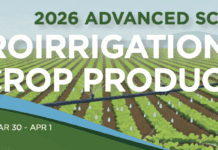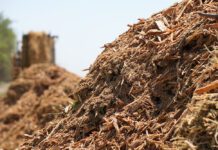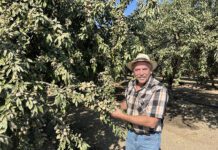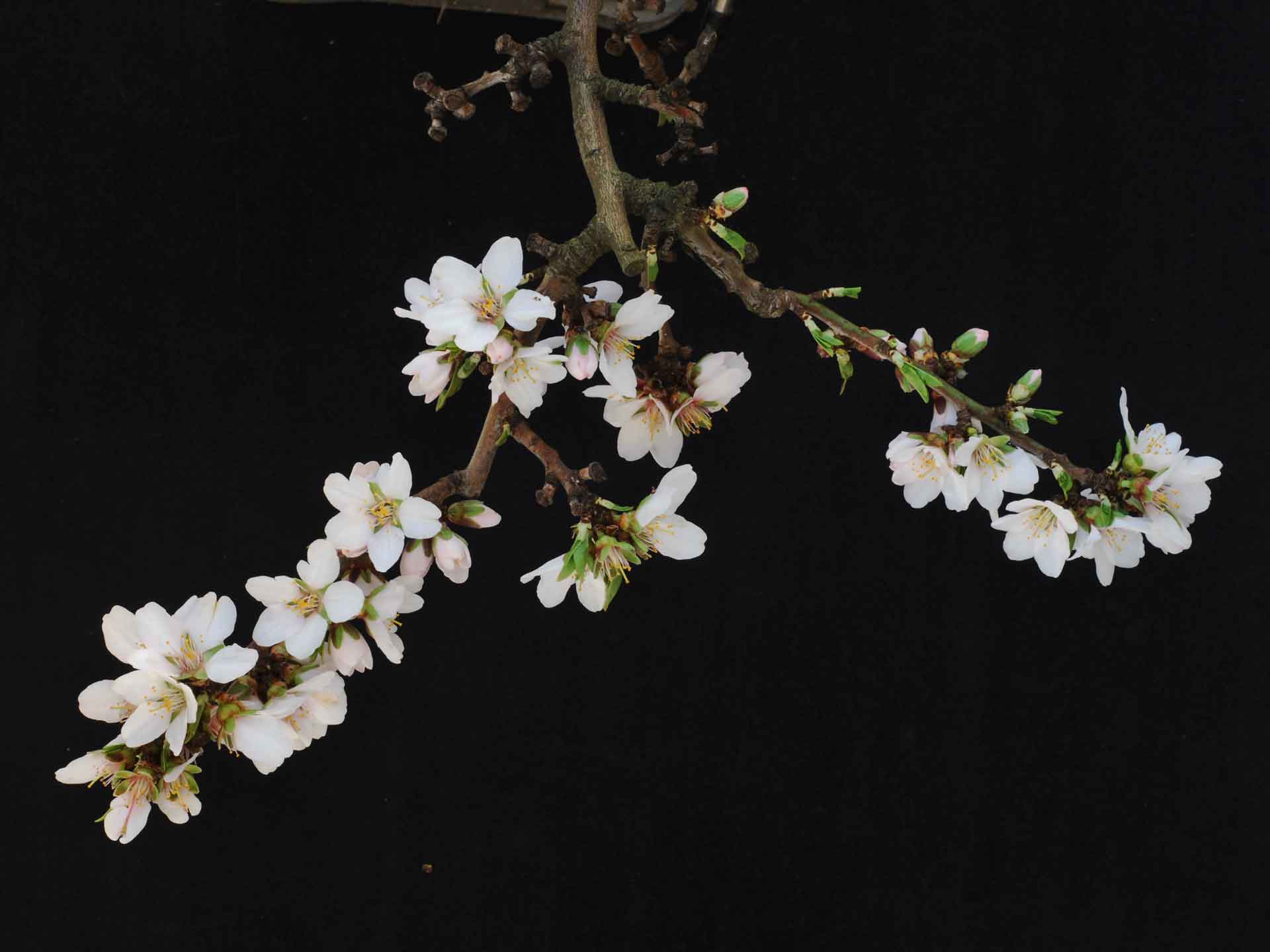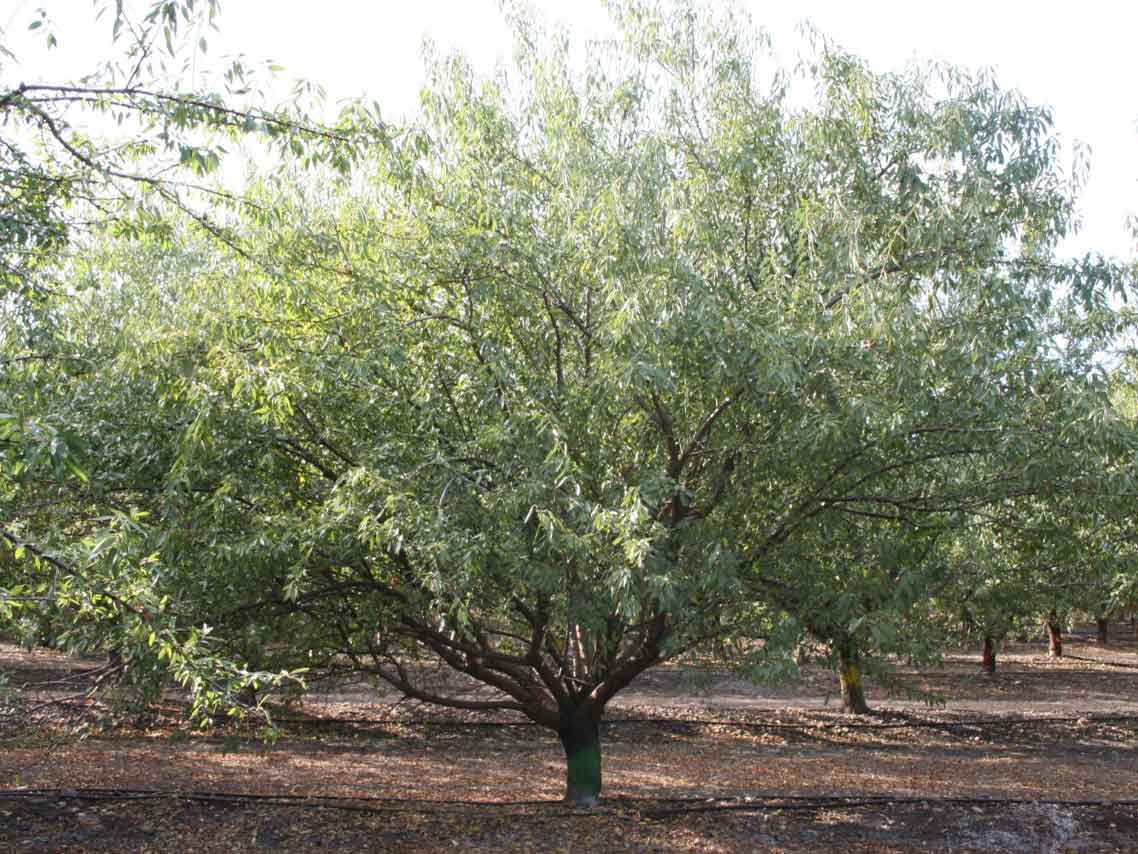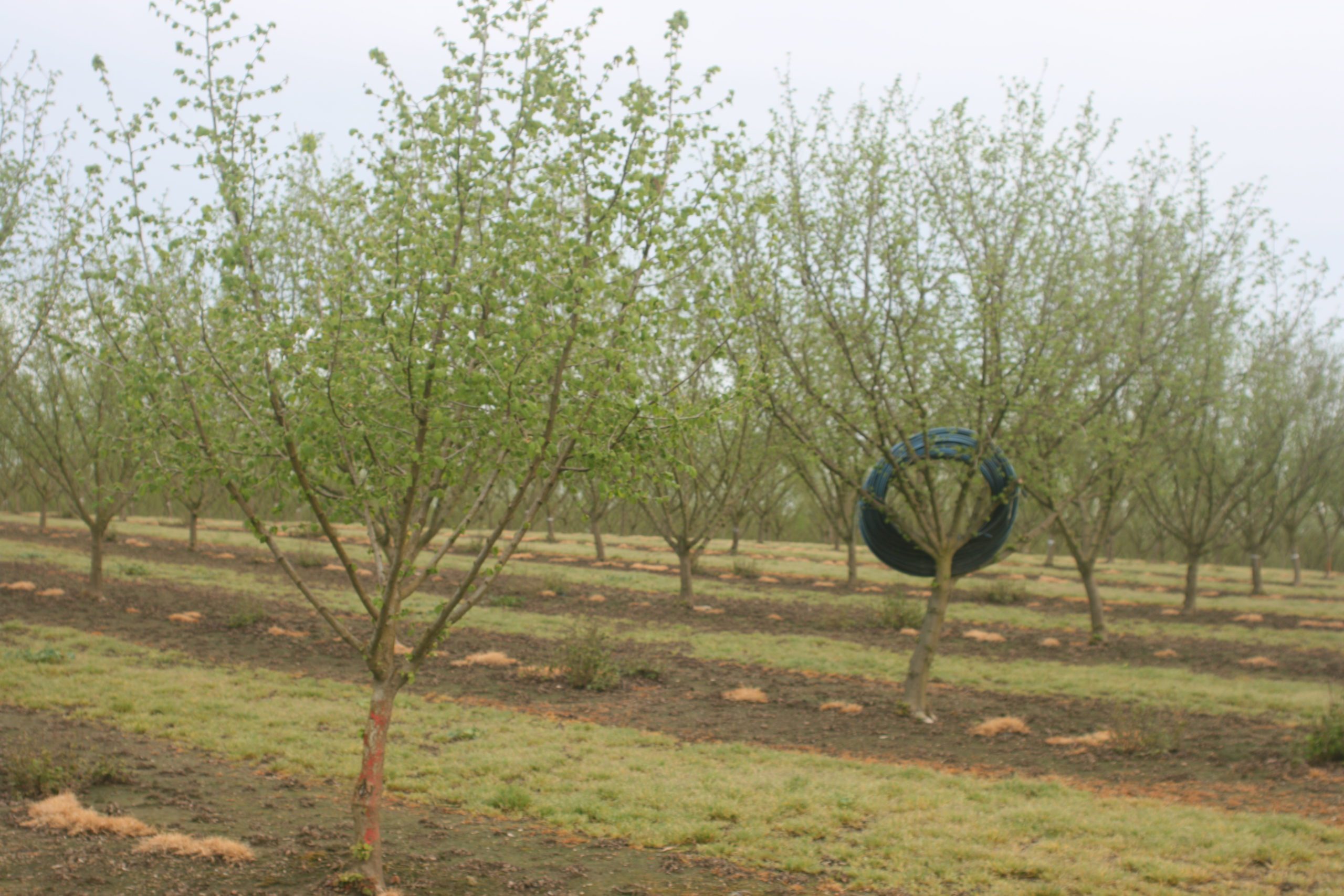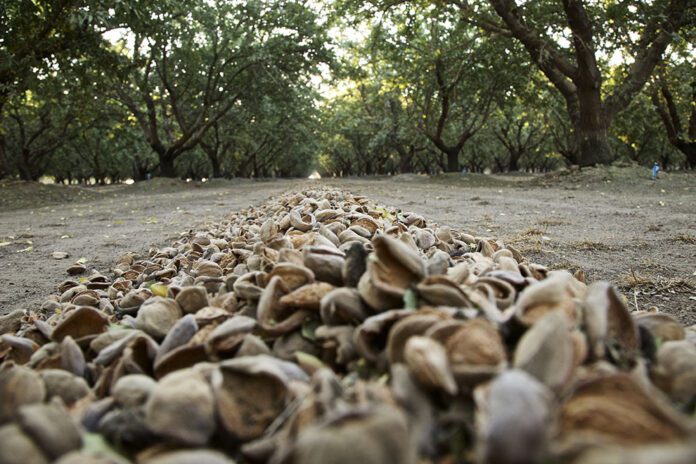
Listen to the audio version of this article. (Generated by A.I.)
After being efficient with irrigation, nutrition and insect control programs in your almond orchards, why throw that to the wind as harvest approaches?
Improving harvest efficiency is also a part of producing a high-quality and valuable crop, while reducing dust and saving time and money. Almond growers and processors listed monitoring for harvest readiness, orchard floor preparation prior to harvest, communicating with huller and harvest crews and trucks to plan routes, training harvest equipment drivers, and making a pass with a conditioner as their harvest efficiency protocols.
1. Monitoring Readiness for Harvest
As the growing season nears the end, signs of hull split begin to appear. Hull split happens in stages, from the first appearance of the suture line on the hull to a suture opening more than 1 cm in width with a fully exposed shell. When 100% of the nuts on the tree reach that stage, almond trees are ready for shaking. The UC publication Sacramento Valley Orchards reports that timely harvest followed by rapid removal of nuts from the orchard floor is an effective way to cut down on navel orangeworm damage. Timely harvest can also help reduce the incidence of hull rot by reducing the time the nut is open and vulnerable to fungal infection.
Starting to shake trees while hulls are still green will require a longer drying time on the orchard floor. The likelihood of ant damage increases the longer the nuts remain on the ground. Nuts harvested in the later stages of readiness also have a higher chance of being cleanly hulled and reduce the change in pellicle color. There is also a higher risk of barking damage to trees if shaken too early.
2. Preparation of Orchard Floors
There is no downside to orchard floor preparation despite labor costs. This practice pays off with a faster harvest and reduces dust and equipment damage. Nut grades may also improve. Donny Hicks with RPAC said smoothing off uneven ground and burning down weeds helps equipment move through the orchard faster.
“It is hard to move a sweeper through the orchard on uneven ground, they’ll hit gopher mounds and create a lot of dust,” he added.
Hicks said the floor prep is mostly in the centers. Growers that have good-level floors but have center mow strips will burn down the vegetation with an herbicide spray 14 to 21 days before harvest. Growers with bare floors but with tractor ruts or rodent mounds will use a V-blade leveler that will knock down high areas and fill in low areas. Growers with bare floors and large cracks in the soil will use a V-blade leveler that will scrape and fill in cracks. This will help mitigate nut loss to open cracks. Bare ground prep takes place when soil is dry and occurs a few weeks before harvest.
Smooth, dry floors will also have fewer sticks, rocks, and other foreign material swept into windrows and collected during pickup.
For growers who planted cover crops last fall between the orchard rows, spring is the time to remove that extra vegetation. Mowing after bloom is over, then drying down remaining vegetation with a herbicide application will take care of vegetation residue before harvest time.
The Almond Board of California also notes that maintaining a clean orchard floor lowers food safety risks.
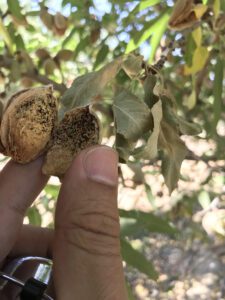
3. Using a Conditioner
Not all growers do this or want to pay for the extra passes through the orchard, but Mike Kelley, manager of Central California Almond Growers Association, said use of a conditioner makes a big difference in the quality of the incoming nuts. Less debris in the loads prevents kernels from being scuffed up in the process. Unblemished kernels are the goal. Processors also want cleaner loads.
“Loads that come in with lots of sticks and dirt slow the process. There is less abrasion on the equipment and less debris to dispose of,” Kelley said.
In orchards with heavier soils, more dirt can be swept up into the windrows. The conditioner pass sifts out excess dirt and makes an even windrow, which allows for faster drying. Less time on the floor also reduces insect damage.
More almond growers are choosing to use a conditioner to sift out dirt
and sticks from the windrows, as there are incentives.
“They see the value in sending in cleaner loads, their hull quality is improved and they are saving on freight due to fewer loads,” Kelley said.
‘Use of a conditioner makes a big difference in the quality of the incoming nuts. Unblemished kernels are the goal. Processors also want cleaner loads.’
4. Communication
“Call me before you are done,” CR Orchards’ Jennifer Dickey tells harvester drivers. She emphasizes that coordinating movement of a harvest crew in the orchard and moving equipment to the next harvest site requires advance planning. A heads-up on completion time will avoid wait times for drivers. Dickey said knowing how much time she has before loading the harvester allows for final cleanup tasks. Equipment to be hauled needs to be loaded in sequence.
5. Training Harvest Equipment Drivers
Having an experienced harvest crew isn’t always possible. Dickey said she has a lot of rehires each year, but training new drivers about equipment use and routes through an orchard is a must. Inexperience and inadequate training slow harvest and pose safety risks.
“Training is hands-on and we monitor them closely for the first two days,” Dickey said. “We also spend hours going over safety.”
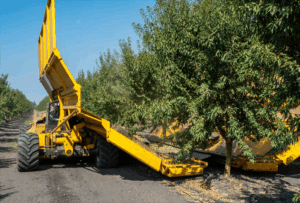
Shaker drivers are trained on an obstacle course designed to teach shaking patterns and where to grab tree trunks.
AgSafe’s Angelina Ceja said all equipment drivers should be trained at the time of hire, when there are changes in operation or when new equipment is introduced. There should also be refresher training for returning drivers, even if they have experience. Safe and proper use of equipment, maintenance and hazards associated with its use should be included in the training. Identification and correction of any issues with equipment, performing a pre-inspection before use and a practical driving evaluation to ensure that employees can operate the equipment in a safe manner are also essential to keeping harvest running smoothly.
Ceja said growers or farm managers of harvest crew leaders can provide training internally, or there are resources available online and courses that can be taken to ensure that all required information is covered. Additional resources and training can be provided by equipment dealers, private companies or workers’ compensation carriers. AgSafe provides training and resources for growers or farm managers as well.

Cecilia Parsons
Cecilia Parsons has lived in the Central Valley community of Ducor since 1976, covering agriculture for numerous agricultural publications over the years. She has found and nurtured many wonderful and helpful contacts in the ag community, including the UCCE advisors, allowing for news coverage that focuses on the basics of food production.
She is always on the search for new ag topics that can help growers and processors in the San Joaquin Valley improve their bottom line.
In her free time, Cecilia rides her horse, Holly in ranch versatility shows and raises registered Shetland sheep which she exhibits at county and state fairs during the summer.






